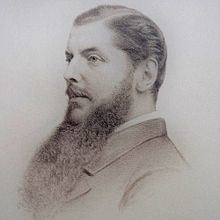Role Politician Name William Borlase | Nationality British | |
 | ||
Occupation Antiquarian and politician Parent(s) Samuel Borlase and Mary Anne nee Copeland Died March 31, 1899, London, United Kingdom Books The Age of the Saints: A Monogr, The Age of the Saints; a Monogr, (The) Descent - Name an, The Dolmens of Ireland: T, Naenia Cornubiae: A Descrip | ||
William Copeland Borlase FSA (5 April 1848 – 31 March 1899) was an antiquarian and Liberal politician who sat in the House of Commons from 1880 until 1887 when he was ruined by bankruptcy and scandal.
Borlase was born at Castle Horneck, near Penzance in Cornwall, England, the only son of Samuel Borlase and his wife Mary Anne Copeland, daughter of William Copeland of Chigwell, Essex. A member of a wealthy Cornish family, Borlase's early life was much influenced by the archaeological work of his great-great-grandfather, Dr. William Borlase the Cornish historian. Young Borlase visited many of the ancient sites in Cornwall and in 1863 and supervised the excavations of the re-discovered prehistoric settlement and fogou at Carn Euny. Although Borlase produced many sketches he commissioned fellow Cornish antiquarian John Thomas Blight to do the engravings for the report. Borlase was educated at Winchester College and Trinity College, Oxford. He was called to the bar at Inner Temple in 1882 and was JP for Cornwall and a Deputy Warden of the Stannaries of Cornwall and Devon.
In the 1880 general election, Borlase was elected Liberal Member of Parliament for East Cornwall, until the seat was divided in the Redistribution of Seats Act 1885. In the 1885 general election, he was elected MP for St Austell. In 1886, he was made Parliamentary Secretary to the Local Government Board. However he took to fine living. His Portuguese mistress exposed his debts and the scandal brought him ruin and bankruptcy. He resigned his seat in the House of Commons and went off to work in Ireland as a remittance man. He also went on to manage tin mines in Spain and Portugal. The rest of the family disowned him and he died aged just 50. His address when he died was 34, Bedford Court Mansions, Bloomsbury, in London.
